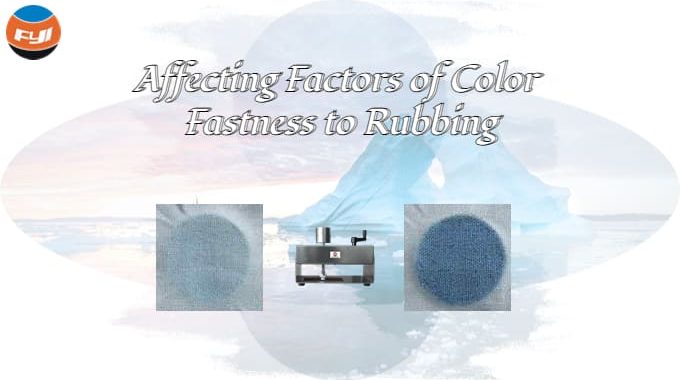
Affecting Factors of Color Fastness to Rubbing
The color fastness to rubbing of dyed products is divided into dry rubbing fastness and wet rubbing fastness. The former is to rub the dyed product with a dry white cloth to observe the color sticking to the white cloth. The latter is to rub the dyed product with a white cloth containing 100% water and observe the staining of the white cloth. The friction fading of the fabric is caused by the dye falling off under the action of friction. In addition to the action of external force, wet rubbing also has the action of water. Therefore, wet rubbing is generally about 1 grade lower than dry rubbing fastness.

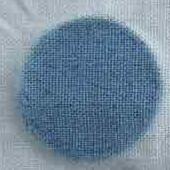
The rubbing fastness of the fabric depends on the amount of floating color, the molecular weight of the dye, the combination of the dye and the fiber, the uniformity of the dye penetration, and the particle condition of the dye on the surface of the fabric.
- For reactive dyes, the dyes and fibers are fully combined by covalent bonds, and the rubbing fastness is high.
- If insoluble azo dyes are used for dyeing, some dyes will become insoluble when the dyeing process is not good. They are mechanically attached to the fiber surface. Its rubbing fastness is low. If the floating color is not cleaned, the rubbing fastness will be lower.
- The dye molecule is large (such as sulfur black), and dye easily forms large particles of dye floating color on the surface of the fiber after dyeing. In addition, the concentration of the dye is generally too high, which reduces the fastness to rubbing.
- The binding force of most dyes to fibers is more easily destroyed in the presence of moisture. Therefore, the wet rubbing fastness is lower than the dry rubbing fastness.
Let’s analyze the influencing factors of color fastness to rubbing.
Contents
The influence of fabric surface morphology
Unfixed dye is the main cause of poor crocking fastness. Under dry conditions, if the surface is rough or sanded, raised fabrics, hard such as linen fabrics, denim fabrics and pigment printed fabrics, if dry rubbing is performed, it is easy to rub off the dyes, paints or other colored substances accumulated on the surface of the fabrics. Even causing some colored fibers to break and form colored particles, further reducing the color fastness to dry rubbing. For sanded or piled fabrics, the fluff on the surface of the fabric and the surface of the friction cloth form a certain angle, which is not parallel, so that the friction resistance of the friction head increases during the reciprocating motion, and the dry resistance of this type of fabric is increased. Rubbing color fastness decreased.
The effect of fabric structure
On the sample surface of light and thin fabrics (usually synthetic fibers or silk fabrics), due to the relatively loose structure of the fabric, when performing dry friction, the sample will be rubbed with the movement of the friction head under the action of pressure and friction. Part of the slip, so that the friction resistance increases, and the friction efficiency improves. But when it comes to wet rubbing, the situation is completely different with cellulose fibers.
Due to the extremely low hygroscopicity of the fiber or the insignificant water swelling effect, and the presence of water acts as a lubricant, the color fastness to wet rubbing of this type of fabric is significantly better than the color fastness to dry rubbing.
Therefore, for some specific fabrics, it is not uncommon for the color fastness to wet rubbing to be better than the color fastness to dry rubbing. At this time, although the type of dye selected, the performance of the dye, the process conditions of dyeing and finishing, etc., will also have an impact on the color fastness to rubbing, compared with physical factors such as the structure and surface morphology of the fabric, it is more important. It doesn’t seem very important anymore.
Most of these cases are dark products, such as black, red and navy blue. Of course, for fabrics such as corduroy, twill and pigment printing, under wet conditions, due to the dyes and printing and dyeing processes used, the color fastness to wet rubbing is usually level 2 or even lower. Not superior to its color fastness to dry rubbing.
Influence of the chemical structure of reactive dyes
When the cellulose fiber fabric dyed with reactive dyes is tested for color fastness to wet rubbing, there are two main factors that cause color transfer:
- One is that the water-soluble dye is transferred to the rubbing fabric during rubbing, fading the original color and staining the rubbing cloth.
- The second is that some of the dyed fibers break during friction, forming tiny colored fiber particles and being transferred to the rubbing fabric, causing staining.
Factors that may affect the color fastness to wet rubbing of reactive dyes are:
- The structure and characteristics of reactive dyes themselves.
- The nature of the fabric.
- Pretreatment effect, cloth damage and surface finish, etc.
- Dyeing process and the effect of soaping after dyeing.
- Color fixing effect after dyeing of fabric.
- Effects of finishing on dyed fabrics, etc.
Studies have shown that although there are certain differences in the covalent bond strength, bond stability and adhesion between reactive dyes of different chemical structures and cellulose fibers, there is no significant difference in the effect on the color fastness to wet rubbing of dyed fabrics. When the dyed fabric is wet rubbed, the covalent bond formed between the dye and the fiber will not be broken to cause floating color. The transferred dye is usually supersaturated, does not form a covalent bond with the fiber, and only relies on van der Waals’ force to generate adsorption, that is, the so-called floating color.
Influence of dyeing degree of reactive dyes
The color fastness to wet rubbing of fabrics dyed with reactive dyes is closely related to the depth of dyeing, that is, when wet rubbing is performed, the amount of color transfer and the depth of dyeing is almost in a good linear relationship. Excessive dyes cannot be combined with fibers, but can only accumulate on the surface of the fabric to form floating colors, which seriously affects the color fastness to wet rubbing of the fabric.
Cotton fibers without special treatment will swell under wet conditions, the friction will increase, and the fiber strength will decrease. These have created good conditions for the breakage, shedding and color transfer of colored fibers. Therefore, the cellulose fiber should be properly pre-treated before dyeing, such as mercerizing, singeing, cellulase finishing, scouring, bleaching, washing, and drying. It can improve the smoothness and capillary effect of the fabric surface, reduce frictional resistance, and reduce floating color, thereby effectively improving the color fastness to wet rubbing of the fabric.
The effect of softener
Improving the color fastness of reactive dye printing by soft finishing. The softener has a lubricating effect, which reduces the coefficient of friction and thus prevents the dye from falling off. Cationic softeners can also form lakes with anionic dyes, and the dyes are not easy to fall off. At the same time, the color lake reduces the solubility of the dye, which can improve the wet rubbing fastness. However, softeners with hydrophilic groups are not conducive to the improvement of wet rubbing fastness.
In the process of production practice, the water-soluble group of the dye can be blocked by using a color fixing agent, the pH value of the finished color cloth can be controlled, the floating color can be removed, the smoothness of the fabric can be improved, and the wet rubbing fastness of the fabric can be improved. Proper pre-baking can avoid dye “migration”. Factors that need attention include the amount of alkali agent, steaming time, washing method, sufficient soaping, etc. The first two are closely related to the degree of hydrolysis of the dye, and the latter two are directly related to the floating color of the dye.
The dyed fabric, especially the long-car pad dyeing, must go through sufficient washing and soaping processes to remove floating colors on the fiber surface and unreacted and hydrolyzed dyes, so as not to affect the color fastness. If you don’t pay attention to the post-treatment of dyeing, it will cause poor color fastness, and the color light will become dull at the same time.
Among the above-mentioned factors affecting the color fastness to rubbing of fabrics, the working principles of each factor are very different, and the degree of influence is also different. The problem of color fastness seems simple, but the factors involved are quite complicated. In order to ensure the rubbing fastness, it is necessary to select suitable dyes and formulate a reasonable process to ensure that the dyes can be fully combined with the fibers. And fully penetrate into the inside of the fiber, so that it will not gather on the surface of the fiber, and the floating color should be fully washed after dyeing. If necessary, the color-fixing crosslinking agent can be added to make the dye and fiber more firmly combined and reduce the friction on the surface of the fabric. At the same time, a soft film covering the dye is formed on the surface of the fiber, so that the dye is not easy to fall off when rubbing, and the rubbing fastness is improved.
Comments are closed.
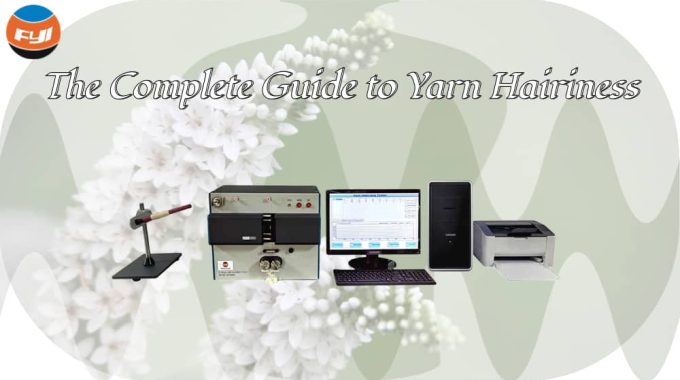
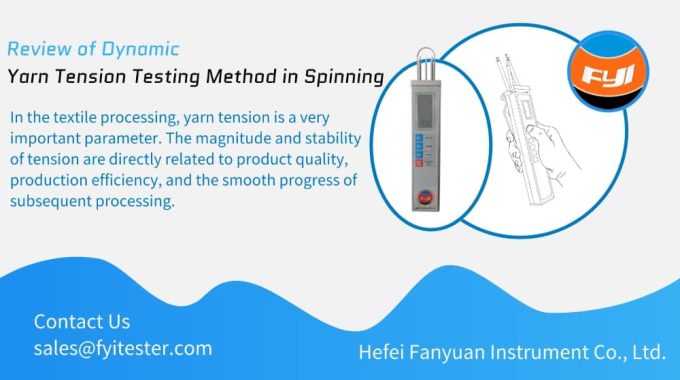
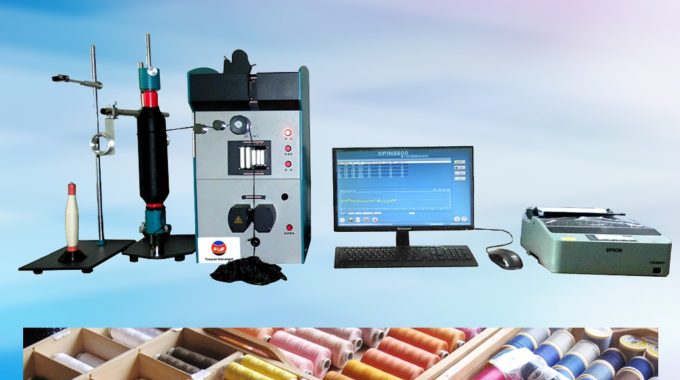
Oh, such a lovely and fantastic post! A chance to read wonderful and fictitious blogs. It offers me a lot of joy and curiosity. Thank you for your contribution.
Excellent post! I admire your efforts to share your expertise with others. I can discover numerous things that are yet unknown to me.
Excellent and well-written piece. Everyone will benefit from it.
Thank you for providing this useful information to the people. Keep up the good work.
Excellent blog! Thank you very much for your generosity. This is an incredible and helpful blog.